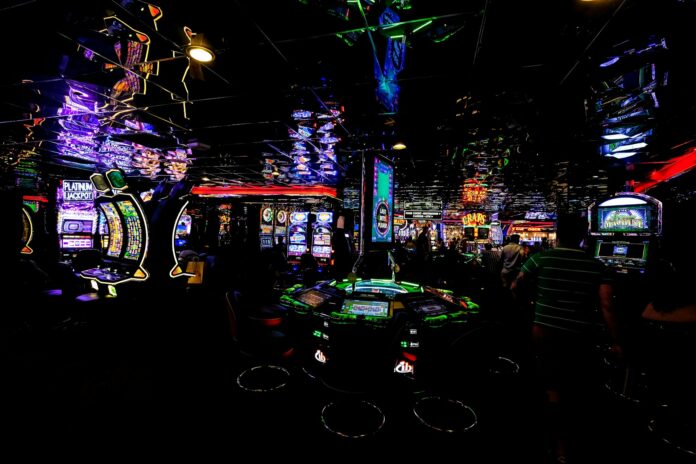When virtual reality (VR) began to capture the public’s attention in the early 2010s, many experts predicted it would revolutionize the online gambling industry. The idea of fully immersive, 3D casinos where players could walk around, interact with others, and experience games in a lifelike environment seemed like the future. However, the adoption of VR in online casinos has been much slower than expected.
In this blog, we’ll explore why VR casinos haven’t taken off as quickly as anticipated, what progress has been made, and the challenges that still need to be addressed for this futuristic technology to truly transform online gambling.
The Promise of Virtual Reality in Online Casinos
The potential of VR to revolutionize online gambling was undeniable. It promised to provide a 360-degree casino experience that mimicked the ambiance of land-based venues. With VR, players could don a headset and instantly find themselves sitting at a blackjack table or walking through a luxurious casino floor, complete with immersive sights and sounds.
For live casino games, the potential seemed particularly exciting. The ability to participate in a game where the dealer and other players existed in a 3D space offered a level of realism that traditional online games couldn’t match. Live casino platforms had already proven that players enjoyed the social aspects of gambling with real dealers in real time, and VR promised to enhance that experience even further.
But despite this promising vision, the reality of VR in online casinos has been far less widespread than expected. So, what’s holding it back?
Barriers to Adoption
- High Cost of VR Equipment
One of the primary reasons for the slow adoption of VR in online casinos is the cost of the necessary equipment. While VR headsets have become more affordable in recent years, they still represent a significant investment for casual players. A quality VR setup, including devices like the Oculus Rift or HTC Vive, can cost several hundred dollars.
In comparison, traditional online casinos and live casino platforms require only a computer or smartphone—devices most players already own. For many, the added immersion of VR isn’t enough to justify the additional cost, especially for something as recreational as gambling.
- Limited Game Selection
Another factor limiting VR’s popularity in online casinos is the lack of variety. Most VR casinos currently offer only a small selection of games, primarily focused on classic table games like blackjack, roulette, and poker. While these games are important staples, they don’t appeal to the entire online casino demographic. Players accustomed to the vast libraries available on traditional casino platforms may find VR casinos too restrictive.
In contrast, live casino platforms already offer a wide variety of games, including live dealer blackjack, roulette, and baccarat, which have proven incredibly popular. These games provide much of the interactivity and excitement that VR promises, but without the need for specialized equipment.
- Technical Challenges
Creating a fully immersive VR casino experience is technically challenging. Developers need to build 3D environments that look and feel realistic, with smooth animations and interactions. Achieving this level of quality requires significant resources, both in terms of time and money.
Furthermore, VR requires a high-speed internet connection and powerful hardware to run smoothly. Many users still experience lag or technical issues that can break immersion, making the experience frustrating rather than enjoyable.
Online casinos also face the challenge of compatibility. A player using a VR headset expects the experience to be seamless, whether they’re playing on a desktop, mobile device, or VR rig. Ensuring that games work consistently across all platforms can be a costly and time-consuming process.
The Progress So Far
Despite these challenges, some progress has been made in bringing VR to the online casino world. A handful of casinos have launched VR platforms that allow players to explore virtual worlds, interact with other players, and participate in games in real-time. These VR casinos offer impressive 3D environments, where players can walk around, sit at tables, and even interact with slot machines.
Social features have also been integrated into some VR casinos, enabling players to chat with one another, much like they would in a real casino. This adds an element of community that traditional online casinos often lack. These advancements are promising, but they’re still not widespread enough to make VR a mainstream option for most players.
While VR poker rooms and slot games are available in some casinos, the variety of games on VR platforms still pales in comparison to those offered on traditional online and live casino platforms. This limited selection means that VR isn’t yet an attractive option for players who value game variety.
Challenges That Remain
Several challenges still need to be overcome for VR to become a significant force in online gambling.
- Affordability: VR headsets must become more affordable to attract casual players. As technology advances and prices drop, VR may become more accessible, but we’re not there yet.
- Game Development: VR casinos need a broader range of games to appeal to a wider audience. More slots, table games, and live dealer experiences will be key to drawing in more players.
- Technical Improvements: VR platforms must continue to improve performance and compatibility. As 5G and better internet speeds become more widespread, VR experiences should become smoother and more enjoyable, helping to overcome current technical limitations.


